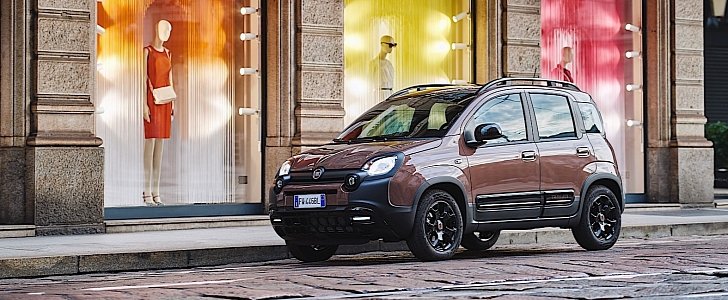Remember Fiat? The Italian conglomerate may own Fiat Chrysler Automobiles, but the brand per se has seen better days in the European Union. 2018 sales stand proof of the commercial downturn, totaling 697,977 vehicles.
For the sake of reference, 2017 sales topped 769,670 while the year 1990 saw Fiat enjoy 9.91 percent of the market share. Halving the sales volume is one thing, but the biggest shortcoming for Fiat is how boring the cars are, including the once-popular 500 series and the cutesy little Panda.
Green NCAP took a dig at the Italian manufacturer in the third and final round of testing this year, and the Panda struggles to make a case for itself as an eco-friendly means of personal transportation. The “control of some pollutants, most notably particulates, was poor in gasoline mode and the Clean Air index fell to the two-star level and dictated the overall rating.”
The bi-fuel option combines compressed natural gas and a 35-liter tank of gasoline, and as everyone will tell you, CNG is arguably the cleanest fossil fuel out there. Burning compressed natural gas by means of an internal combustion engine releases as much as 50 percent less carbon dioxide than coal and up to 30 percent less than oil. Gasoline options such as the naturally aspirated 1.2- and turbo 0.9-liter plants in the Panda aren’t up to snuff, though.
As Fiat flounders, Green NCAP is much obliged to report that SEAT scored “nearly full marks for Clean Air, with an index of 9.8 out of 10,” with the Arona. The Energy Efficiency Index of 6.1 translated to an overall rating of four stars, and all of the tests were adequate except for the high-load highway assessment. Then again, what did you expect from a crossover developed primarily for city driving and commuting over short distances?
The Skoda Octavia with the 110-kW turbo diesel “is an average performer” according to the Green NCAP, and that’s somewhat curious if you remember the technologies that complement the 2.0 TDI. Exhaust gas recirculation, selective catalytic reduction, and the diesel particulate filter are the highlights, and soon enough, the all-new Octavia will enter the scene with mild hybridization for the EA288 Evo.
Green NCAP took a dig at the Italian manufacturer in the third and final round of testing this year, and the Panda struggles to make a case for itself as an eco-friendly means of personal transportation. The “control of some pollutants, most notably particulates, was poor in gasoline mode and the Clean Air index fell to the two-star level and dictated the overall rating.”
The bi-fuel option combines compressed natural gas and a 35-liter tank of gasoline, and as everyone will tell you, CNG is arguably the cleanest fossil fuel out there. Burning compressed natural gas by means of an internal combustion engine releases as much as 50 percent less carbon dioxide than coal and up to 30 percent less than oil. Gasoline options such as the naturally aspirated 1.2- and turbo 0.9-liter plants in the Panda aren’t up to snuff, though.
As Fiat flounders, Green NCAP is much obliged to report that SEAT scored “nearly full marks for Clean Air, with an index of 9.8 out of 10,” with the Arona. The Energy Efficiency Index of 6.1 translated to an overall rating of four stars, and all of the tests were adequate except for the high-load highway assessment. Then again, what did you expect from a crossover developed primarily for city driving and commuting over short distances?
The Skoda Octavia with the 110-kW turbo diesel “is an average performer” according to the Green NCAP, and that’s somewhat curious if you remember the technologies that complement the 2.0 TDI. Exhaust gas recirculation, selective catalytic reduction, and the diesel particulate filter are the highlights, and soon enough, the all-new Octavia will enter the scene with mild hybridization for the EA288 Evo.





















